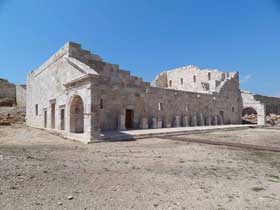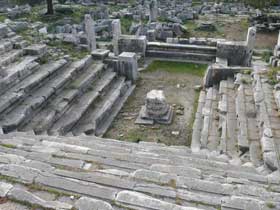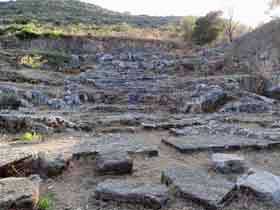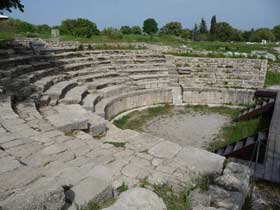 |
 |
|
|
|
An Odeon, also called Odeion, was an ancient building used for musical performances, competitions and council meetings. Mostly it had a semicircular ground plan and differed from the theatre in that it was roofed over like a bouleuterion. The building, which was mostly built on a rectangular ground plan, often had the form of a small theatre hall with rising rows of seats around a central or front lecture area. The rising rows of seats could be semi-circular (Miletus) or rectangular (Priene). However, there were also simple solutions in which rows of benches or chairs at ground level served as seating (Adada). |
|
|
|
|
|
Other Odeons / Bouleuterions in preparation |
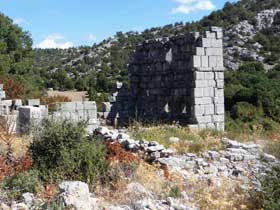 |
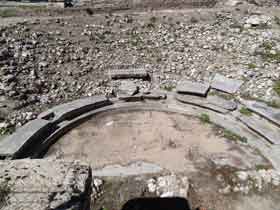 |
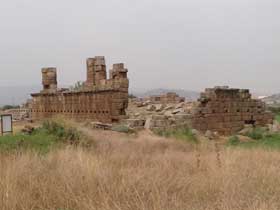 |
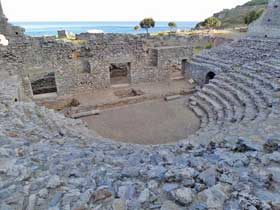 |
||||
|
Adada |
Aizanoi | Alabanda | Anemurium | ||||
|
Administrative building called Bouleuterion with high-quality brickwork with Hellenistic features. |
Bouleuterion or Odeon. Probably erected towards the end of the 1st century AD. |
Bouleuterion from Hellenistic times. The building has not yet been excavated. |
Odeon from the 2nd century A.D. One of
the best preserved Odeons in Turkey. |
||||
| more: | more: | more: | more: | ||||
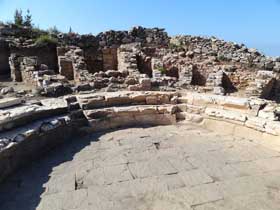 |
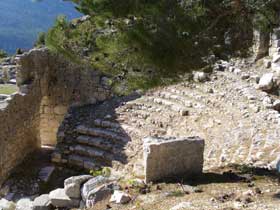 |
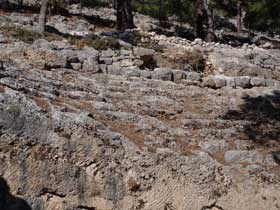 |
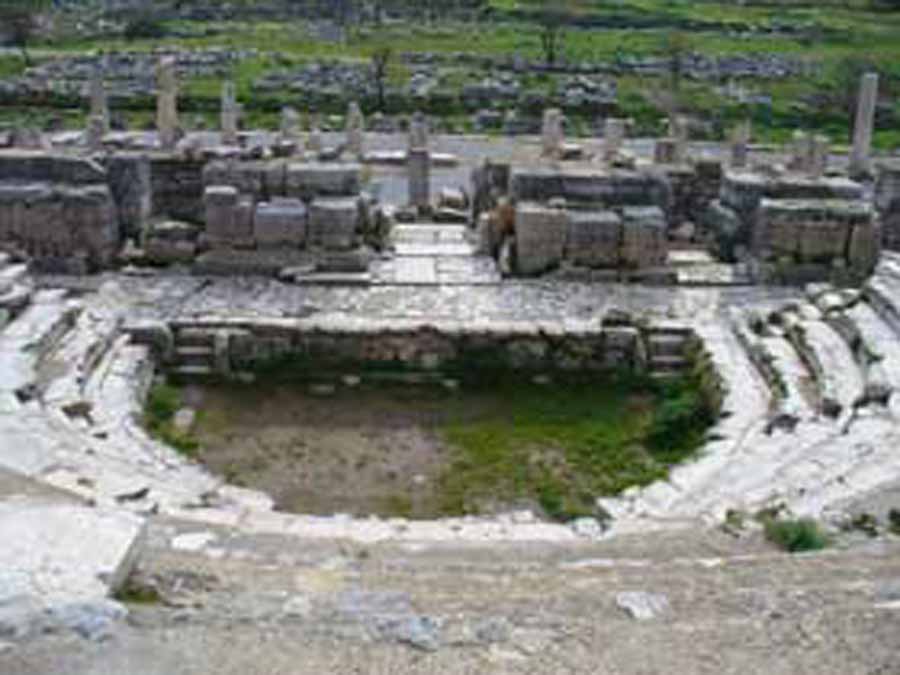 |
||||
| Antiochia ad Cragum | Arykanda Odeon | Arykanda Bouleuterion | Ephesus | ||||
|
Odeon or little theatre. Probably built around the 1st century AD. |
Odeon from the 2nd century A.D., is located directly at the lower Agora. |
Bouleuterion
probably from the 1st century BC, located at the end of the upper
agora. |
Odeon from the 2nd century as a foundation of Father Vedius Antonius and his wife. Capacity: approx. 1,500 spectators |
||||
| more: | more: | ||||||
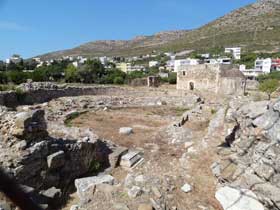 |
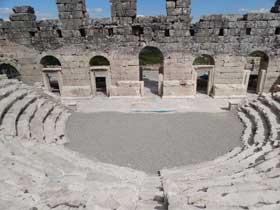 |
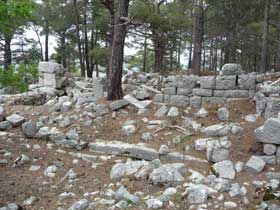 |
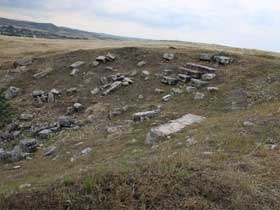 |
||||
| Kelenderis | Kibyra | Kitanaura (Sarayçik) | Laodicea ad Lykos | ||||
|
Odeon, Theater or Theatron. Built in the time of the early Roman Empire. Capacity: unknown |
Odeon from the 1st century A.D., which was later probably also used as a bouleuterion. Capacity: approx. 3,600 spectators |
The Bouleuterion could only be localized by archaeological features. Capacity: unknown |
Bouleuterion from the reign of Emperor Hadrian (117-138 AD). |
||||
| more: | more: | more: | more: | ||||
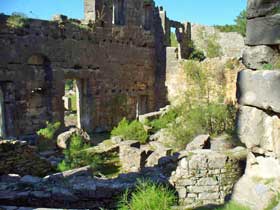 |
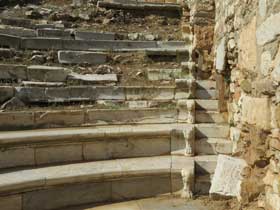 |
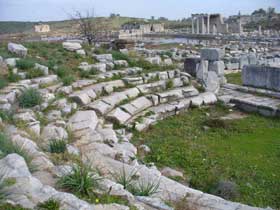 |
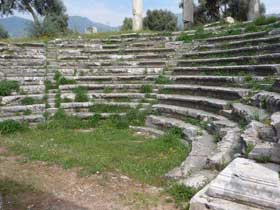 |
||||
| Lyrbe | Metropolis | Miletus | Nysa | ||||
|
Kaiser temporal bouleuterion at the Agora, integrated into the well preserved row of shops. |
Bouleuterion from the 2nd century BC, divided by a wall in Byzantine times. |
Bouleuterion, built between 175 and 163 BC as a foundation of the Milesian brothers Timarchos and Herakleides. |
Gerontikon/Bouleuterion
from the 1st century BC, rebuilt in the 2nd century AD. |
||||
| more: | more: | more: | more: | ||||
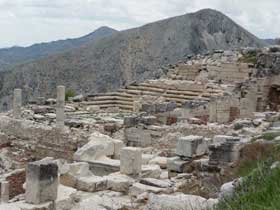 |
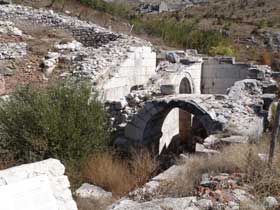 |
||||||
| Patara | Priene |
Sagalassos Bouleuterion |
Sagalassos Odeon | ||||
|
The Bouleuterion was conquered at the turn of the 2nd to the 1st century BC. |
Bouleuterion from the 2nd century B.C. The rows of seats were arranged at right angles. |
Bouleuterion from the 1st century A.D. From 200 A.D. the bule met in the newly erected Odeon. |
Odeon, construction started under Augustus, was only finally completed after 200 years. |
||||
| more: | more: | more: | more: | ||||
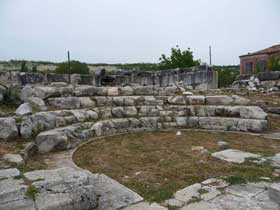 |
|||||||
| Selinus |
Stratonikeia |
Troy |
|||||
|
Odeon from Hellenistic times. Only small remains of the wall are preserved. |
Bouleuterion from the 1st century A.D. On the outer wall price list of the emperor Diocletian. |
Odeon from the 2nd century A.D. Conversion at the instigation of Hadrian. |
|||||
| more: | more: | more: | |||||
|
Other Odeons / Bouleuterions in preparation |
|||||||
